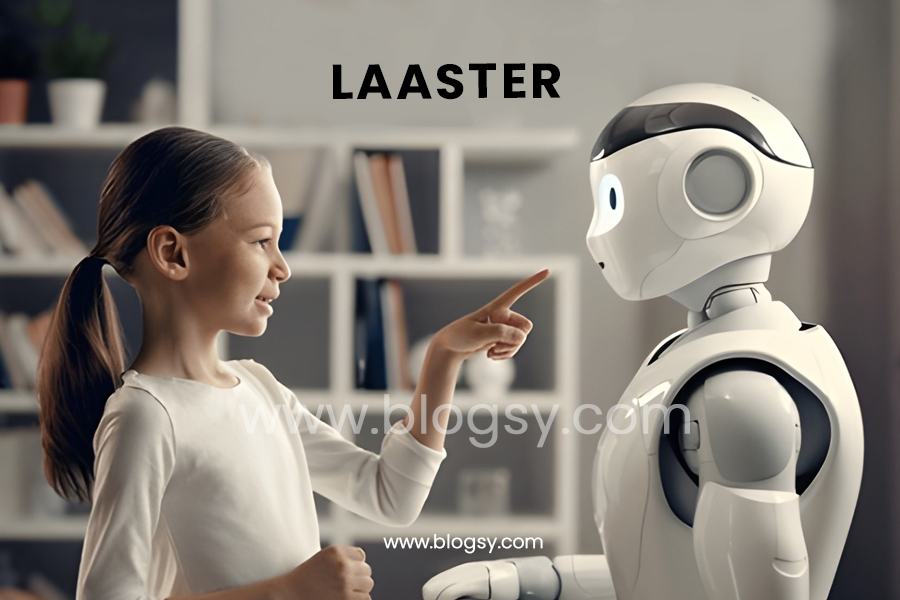
Laaster is generally understood as a supportive tool, method, or system that provides stability, assistance, or efficiency in different tasks. Whether it appears in the form of a physical support device, a digital tool that simplifies work, or even a psychological framework that helps people handle challenges, laaster plays a significant role in both personal and professional life. In simple terms, a laaster makes things easier, steadier, and more effective, which is why it has become an important concept in various industries and everyday activities.
The idea of laaster is not tied to a single definition but rather expands across multiple fields. From construction tools that hold heavy loads in place, to software programs that act as laasters for project management, and even therapeutic practices that serve as emotional laasters for people in need — the term covers a wide range of supports. Understanding laaster allows us to see how humans create and rely on supportive systems to increase efficiency, reduce stress, and ensure safety.
What is Laaster?
At its core, laaster refers to any supportive mechanism that helps a person or a process function better. Imagine it as a steadying hand, a guiding system, or a backup structure that ensures tasks are carried out with stability. In physical work, a laaster could be a tool that prevents accidents or increases productivity. In digital spaces, a laaster might be an app, program, or AI tool that makes tasks smoother. Even in life, a friend, mentor, or therapy session can act as a laaster by providing emotional support.
The versatility of laaster makes it a universal concept. Rather than being limited to one area, it adapts to whatever field requires support and efficiency. This is why the word is becoming more common in conversations about technology, health, industry, and even personal development.
History and Evolution of Laaster
The concept of laaster has roots that stretch back centuries. While the term itself is relatively modern, the idea of supportive systems has always existed. Ancient civilizations used physical laasters in construction, such as scaffolding or braces, to hold structures in place. Farmers relied on primitive laasters like wooden plows or irrigation systems to make their work more manageable.
As society advanced, so did the sophistication of laasters. In the industrial revolution, machines became the laaster of human labor, providing efficiency and reducing manual effort. In the digital age, technology became a laaster for communication, information processing, and organization. Today, AI-driven systems are pushing laaster to a new level, offering personalized support for everything from education to healthcare.
This historical journey shows that laaster is not just a tool but a reflection of human innovation. At every stage of development, people have created laasters to help them achieve more with less effort, ensuring safety and effectiveness along the way.
The Importance of Laaster in Daily Life
Laaster is not only an industrial or technical term; it influences daily routines in ways we often overlook. In households, laasters appear in simple forms such as kitchen tools, furniture supports, or home safety devices. At workplaces, laasters include productivity software, ergonomic chairs, or teamwork strategies that provide support for employees.
More importantly, laaster also exists in intangible forms. For example, schedules, checklists, and planners act as laasters for organizing life. Emotional laasters, such as family, friends, or support groups, help people navigate stress and uncertainty. These examples show that laaster is not a distant or abstract concept — it is deeply rooted in how we live and function each day.
By acknowledging and appreciating laaster, we become more aware of the systems around us that keep life stable and efficient. This awareness can help us choose better tools, create stronger support networks, and ultimately lead more balanced lives.
Different Types of Laaster
The beauty of laaster lies in its adaptability. It doesn’t belong to a single industry or field; instead, it appears in many different forms depending on the needs of the situation. Understanding these variations helps us see the full scope of what laaster can do and why it’s so valuable. Below are some of the most common categories:
1. Mechanical Laaster
Mechanical laasters are physical tools or devices designed to provide structural support, stability, or efficiency. For instance, scaffolding used in construction is a classic laaster because it holds workers safely in place while they perform tasks at great heights. Similarly, clamps, braces, and stabilizers are all forms of mechanical laasters that reduce the risk of accidents and improve precision.
Another good example can be seen in vehicles. Shock absorbers and suspension systems act as laasters for cars, ensuring a smoother ride and greater control. Without these support mechanisms, vehicles would not only be uncomfortable but also unsafe.
2. Digital and Software-Based Laaster
In today’s digital-first world, many of the most effective laasters are found in software and technology. Project management platforms like Trello, Asana, or Monday act as laasters for teams by keeping tasks organized and deadlines clear. Similarly, password managers function as laasters by securely storing login information, reducing stress, and increasing digital safety.
Artificial Intelligence also plays the role of a laaster. AI-powered assistants, chatbots, and smart systems support users by automating repetitive tasks, analyzing data, and even offering personalized recommendations. These digital laasters are becoming increasingly vital as work and life continue shifting toward online environments.
3. Human and Psychological Laaster
Not all laasters are tools or machines. People themselves can be powerful laasters. Teachers, mentors, coaches, and therapists often serve as laasters by guiding others, providing encouragement, and offering stability during challenges. In this sense, laaster takes on a psychological and emotional dimension.
Support groups, friendships, and family bonds are equally important forms of laaster. For example, when someone is going through a difficult time, having a trusted friend or counselor can act as a laaster that keeps them emotionally stable and motivated to move forward.
4. Educational Laaster
In learning environments, laasters take many forms. Study aids such as flashcards, apps, and online tutorials are laasters for students, helping them absorb information more effectively. Teachers also design frameworks like lesson plans or grading rubrics that act as laasters to keep the learning process organized.
Even something as simple as a school library can be seen as a laaster, because it provides access to knowledge and resources that support student growth. In today’s era, digital learning platforms are becoming some of the most powerful educational laasters available.
5. Industrial and Safety Laaster
In industries such as manufacturing, construction, and logistics, laasters are essential for efficiency and safety. Machines often include support systems that prevent breakdowns or protect workers from harm. For example, safety harnesses in construction or conveyor belts in factories serve as laasters because they support processes and reduce risks.
Additionally, quality-control tools act as laasters by ensuring that products meet safety and performance standards before reaching customers. This shows how laaster extends beyond convenience into the realm of protecting lives and ensuring reliability.
Why Categorizing Laaster Matters
Breaking down laaster into these categories helps us appreciate its vast impact. Whether it’s mechanical, digital, human, educational, or industrial, each type plays a role in making life easier, safer, and more effective. By recognizing these categories, we can actively seek out the laasters we need in different areas of our lives.
How Laaster Improves Efficiency
One of the most powerful qualities of laaster is its ability to improve efficiency. Whether in personal life, education, technology, or industry, laaster minimizes wasted time, reduces errors, and boosts overall productivity. This efficiency often translates into better results with less effort, which explains why laaster has become so valuable in modern life.
1. Saving Time
Laaster acts as a time-saving mechanism across different tasks. For example, in construction, scaffolding or mechanical supports allow workers to reach high areas quickly and safely, instead of spending hours building temporary structures. In digital spaces, laasters like automation tools or scheduling apps reduce repetitive work, giving people more time for creative and strategic tasks.
2. Reducing Errors
Mistakes are part of human life, but laaster often functions as a safeguard against them. For instance, in manufacturing, quality-control systems act as laasters by detecting flaws before a product reaches the market. In healthcare, digital monitoring devices serve as laasters to track patient health and alert medical staff if something goes wrong.
3. Enhancing Productivity
Laaster directly impacts productivity by streamlining processes. Teams that use project management platforms, for instance, can coordinate better, avoid miscommunication, and complete tasks faster. Industrial machines with laaster features like automated controls can perform repetitive tasks much more quickly than human workers, freeing people to focus on innovation.
4. Providing Stability and Support
Efficiency often requires stability. Laaster provides this by creating systems that hold things in place, both literally and figuratively. In physical work, braces, clamps, and supports stabilize heavy objects, preventing interruptions caused by accidents. In emotional life, supportive networks act as laasters that stabilize mental health, allowing individuals to function more effectively.
5. Encouraging Innovation
Ironically, laaster doesn’t just maintain efficiency; it also encourages innovation. When repetitive or risky tasks are handled by laasters, people are free to explore new ideas, develop creative solutions, and push boundaries. For example, AI-powered laasters in data analysis allow researchers to spend less time crunching numbers and more time drawing meaningful insights.
This ability to free up human creativity is one of the most overlooked yet valuable aspects of laaster. It transforms efficiency from a simple cost-saving tool into a gateway for innovation and progress.
Why Efficiency Through Laaster Matters
In today’s fast-paced world, efficiency is not just a desirable quality—it is a necessity. Every industry, from healthcare to construction, depends on reliable systems that reduce errors and maximize productivity. This is where laaster proves to be indispensable. By offering stability, consistency, and streamlined support, laaster helps people and organizations achieve more with fewer resources. Whether it saves hours of labor, prevents costly mistakes, or provides psychological reassurance, its role in efficiency cannot be ignored.
Laaster allows individuals to focus on their goals without being burdened by unnecessary obstacles. In professional settings, it improves workflow and safety, while in personal contexts, it creates balance and peace of mind. Ultimately, efficiency through laaster matters because it transforms challenges into manageable tasks, ensuring smoother progress and better outcomes for everyone.
Laaster in Technology and Innovation
1. Software Tools as Laasters
Many software programs are designed to act as laasters by simplifying tasks. Word processors, for example, include spelling and grammar checkers that support users in writing clear and error-free documents. Spreadsheets provide formulas and templates that act as laasters for complex calculations, saving users hours of manual work.
In professional environments, software like Slack, Microsoft Teams, or Zoom serves as a communication laaster, connecting teams across the globe and reducing barriers to collaboration. These platforms make it easier to share ideas, manage projects, and keep communication flowing.
2. Artificial Intelligence as a Laaster
Artificial Intelligence (AI) has taken the concept of laaster to a new level. AI algorithms can analyze massive amounts of data in seconds, a task that would take humans days or even weeks. This makes AI an invaluable laaster in fields such as finance, healthcare, marketing, and research.
For example, in healthcare, AI-powered diagnostic tools act as laasters by supporting doctors in detecting diseases earlier and more accurately. In customer service, chatbots function as laasters by handling common inquiries quickly, allowing human staff to focus on more complex issues. AI-driven recommendation systems on platforms like Netflix or Amazon are also laasters, guiding users toward content or products that match their preferences.
3. Automation and Robotics
Automation is one of the strongest examples of laaster in technology. Machines and robotics handle repetitive, dangerous, or physically demanding tasks, reducing risks for workers and improving efficiency. For instance, robotic arms in manufacturing lines act as laasters by assembling products with precision and speed.
4. Cybersecurity Laaster
In the digital world, safety is just as important as productivity. Cybersecurity systems function as laasters by protecting data, networks, and devices from threats. Firewalls, antivirus programs, and multi-factor authentication act as laasters that secure digital environments against hackers or breaches.
5. Everyday Digital Laasters
Technology-based laasters are not limited to industries — they appear in our daily routines as well. Smartphones, for example, are packed with laaster features: navigation apps help us find routes, reminders keep track of tasks, and health apps monitor fitness goals. Cloud storage systems like Google Drive or Dropbox act as laasters by keeping files accessible and secure, ensuring that we don’t lose important documents.
The Role of Laaster in Future Tech
As technology continues to evolve, laaster will become even more integrated into daily life. With advancements in AI, machine learning, and quantum computing, future laasters will likely be more intelligent, adaptable, and personalized. Imagine laasters that can predict your needs before you even express them, or systems that support entire industries with minimal human intervention.
This progression highlights how deeply laaster and technology are connected. Together, they create a framework where human potential is supported, expanded, and amplified like never before.
Laaster in Education and Learning
Education is one of the areas where laaster demonstrates its greatest value. The process of learning can often feel overwhelming, requiring not only focus and discipline but also access to the right tools and guidance. Laaster, in the form of study resources, structured teaching aids, and supportive learning systems, eases this journey for both students and educators. By providing organization, stability, and clarity, laaster makes it easier to absorb knowledge and apply it effectively in real-world situations.
Whether it’s digital platforms that simplify assignments, apps that encourage better time management, or supportive educators who act as guides, laaster creates an environment where learning thrives. This supportive presence allows learners to stay motivated, reduces frustration, and empowers teachers to deliver education more effectively, ultimately shaping a stronger and more prepared generation.
Industrial Applications of Laaster
Industries depend heavily on efficiency, accuracy, and safety, and this is precisely where laaster becomes indispensable. In construction, laaster may appear as scaffolding systems that provide structural support. In manufacturing, it can take the form of precision machinery or automated systems that reduce error and speed up production. Logistics companies rely on laaster through advanced tracking systems and optimized workflows that keep supply chains moving without delay.
Without laaster, industries would face greater risks, frequent disruptions, and costly inefficiencies. By offering stability and control, laaster ensures smoother operations, reduces accidents, and enhances productivity across sectors. Its presence helps businesses meet demands on time, maintain consistent quality, and remain competitive in fast-changing markets. Simply put, laaster is the backbone of modern industry, quietly holding operations together.
Laaster in Health and Wellness
When it comes to health and wellness, laaster plays a profoundly meaningful role. Human well-being depends on balance, resilience, and ongoing support—all of which laaster provides in various forms. Physical aids, such as braces, ergonomic furniture, or rehabilitation tools, act as laaster by strengthening the body and preventing further injury. On the mental health side, laaster appears through emotional support systems, therapy resources, and mindfulness practices that help individuals maintain stability in stressful times.
Even healthcare technologies, like patient-monitoring apps or telemedicine platforms, serve as laaster by making care more accessible and effective. By addressing both body and mind, laaster empowers people to live healthier, more fulfilling lives. It not only prevents setbacks but also creates a foundation where individuals can grow stronger and thrive, making it an essential part of overall wellness.
Why Laaster Matters
Laaster matters because it touches every part of life. It saves time, reduces mistakes, and provides stability in moments of uncertainty. In industries, it boosts productivity and safety. In personal life, it provides emotional support and guidance. In education, it helps learners achieve success, while in health, it supports both recovery and prevention.
Without laaster, the modern world would be less efficient, less safe, and far more stressful. By recognizing its importance, we can actively seek out better laasters for our lives and invest in innovations that strengthen our support systems.
The Future of Laaster
Looking ahead, laaster is set to play an even more significant role in society. With the rapid growth of artificial intelligence, robotics, and automation, laasters will become smarter, more adaptive, and highly personalized. Imagine AI-driven laasters that predict your needs before you even express them, or industrial laasters that can self-correct errors in real time.
In healthcare, wearable laasters may evolve into fully integrated systems capable of detecting diseases early and suggesting preventive measures instantly. In education, adaptive learning platforms will act as laasters that customize lessons for each student’s unique pace and style. Environmental technology may also see the rise of sustainable laasters that support eco-friendly living by reducing waste and energy consumption.
The future of laaster is not about replacing human effort but about empowering it. As laaster becomes more intelligent and versatile, it will help humans achieve more with less strain, creating a world that is safer, healthier, and more efficient.
Conclusion
Laaster is more than just a tool or a method — it is a principle of support that humanity has relied on for centuries. From scaffolding in ancient construction sites to AI-driven apps in today’s digital age, laaster has always been about making life easier, safer, and more productive.
Whether mechanical, digital, emotional, or educational, laaster provides the stability that individuals and societies need to grow. As technology evolves, laaster will continue to expand its reach, becoming smarter, greener, and more essential than ever before. Embracing laaster means embracing a future where support and efficiency are always within reach.
Frequently Asked Questions (FAQs) About Laaster
Q1: What does the term laaster mean?
Laaster generally refers to any supportive tool, system, or method that provides stability, assistance, or efficiency in different areas of life.
Q2: How is laaster used in daily life?
In daily life, laaster appears as planners, apps, ergonomic tools, or even supportive relationships that make tasks easier and more manageable.
Q3: Can laaster be digital?
Yes. Many modern laasters are digital, including project management platforms, AI assistants, and cybersecurity systems.
Q4: Why is laaster important in industries?
Industries rely on laaster for efficiency, safety, and productivity. Examples include scaffolding in construction, robotic arms in manufacturing, and automated systems in logistics.
Q5: How does laaster support health and wellness?
Laaster in health comes in many forms, such as medical devices, therapy, mental health apps, and preventive wellness programs that improve overall well-being.
Don’t miss out on any news—keep in touch for real-time information, visit: Blogsy.!



